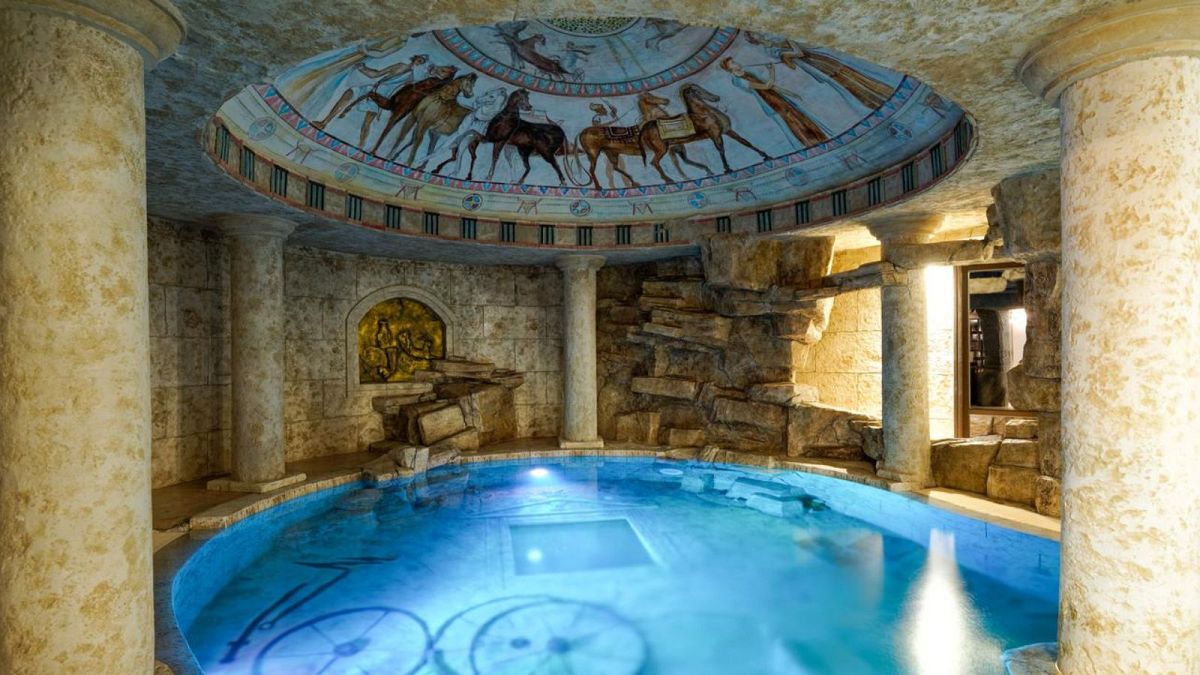Bathing culture is a great way to appreciate a new destination. Will you take the plunge in 2025?
I’m a big bather, but I’m from the UK, which doesn’t have a strong bathing culture. I live near an abandoned Victorian bath house, public pools have closed across the country, andour rivers are not for swimmers.
So, when I holiday, I seek places where I can soak or steam: Istanbul’s hammams, Budapest’s historic baths, Helsinki’s saunas.
Upmarket spa culture isn’t for me, nor the luxury of solitude – I want people doing calisthenics and chatting. I want immersion in social histories, from 19th century invalids taking the waters in German spa towns to 21st century influencers rediscovering wild swimming and cold-water therapy.
There might be no better way to get the sense of a place than by taking a dip – so here are some bathing experiences to try.
Sightsee as you swim in Budapest
It didn’t feel like skipping the sightseeing when I chose to spend every afternoon of my time in Budapest in a different bathhouse.
There are 1,300 thermal water springs in Hungary, and 123 of them are in the capital, welling up into baths that date from different periods of the city’s history. They span the 16th century, Ottoman-style Rudas Bath, Gellert Bath with its Art Nouveau tiling and mosaics, and the massive Neo-Baroque Szechenyi Bath, one of the largest in Europe.
Yes, admire the architecture, but people-watching is where it’s really at – these are massive, social spaces for chilling and chatting.
Hike, spa-hop, and find Europe’s hottest springs
“Bulgaria is among the countries richest in mineral waters in Europe,” says Lyubomir Aleksandrov, of Sofia-based travel company Green Valleys.
There are hundreds of springs in the country, and some are the hottest on the continent, reaching up to 100°C.
The Romans enjoyed bathing in what is now modern-day Sofia. Today, it’s very typical for Bulgarians to use springs, Lyubo says, for physical wellness, or just to lift their mood.
In the countryside, mineral goodness and mountain air combine: visitors hiking in the Pirin or Rodophe Mountains can end their days soaking tired muscles in spa hotels.
Scratch the surface of Finland’s sauna culture
“I think it’s difficult for foreigners coming to Finland to understand how deeply it’s part of Finnish culture,” explains Petri Leinonen, a guide at Finnish nature travel company Upitrek.
Aside from the hygiene, the warmth, and the health benefits, “It’s a place for being honest and open in your deeper feelings and being equals, because there are no signs of your social status. Everyone is equal in the benches of sauna.”
Petri’s father was born in a smoke sauna – a practice that has all but vanished now. Traditionally, sauna is a spiritual place, too. “The steam – the löyly – that’s the spirit of the sauna, and you can connect in this way in the sauna to the spiritual part of your life.”
Get covered in bubbles in a Turkish hammam
Everything is going great at the hammam. You’ve laid on the monumental marble slab in the hot room (sıcaklık) and opened your pores. You’ve been exfoliated, and you’re now ready for a sheet of bubbles to be poured over your body.
But when it happens, the concept of chilling under a full foot of foam is so absurd that you ruin it all by collapsing with laughter. This is the traditional kese-köpük massage – exfoliation with a rough cloth, followed by massaging under the foaming soap.
There used to be around 180 hammams in Istanbul in the 18th century, but busy modern life has seen it fall from favour except for tourists – though you might see a bridal party or stag do taking part.
From freezing lakes to thermal springs in Slovakia
With Swiss-style scenery, albeit wilder and less-visited, Slovakia’s High Tatras is dotted with freezing lakes and rugged peaks, but the countryside has a softer side: cosy thermal waters provide post-hiking respite.
“Slovakia boasts centuries-old wellness practices,” says Alena Dulakova, founder of Tatra Escapes, “It’s known for its thermal springs and spas.”
Soaking, Alena says, is big in the country, and loved by Slovaks. “The bathing culture offers a unique way to connect with the country’s traditions and natural beauty.”
Laze and lather as you watch for Northern Lights
Land of ice and fire – and mud, and algae: Iceland’s geothermal activity generates more than a quarter of its energy, and provides over 600 hot springs, many which come with fantastic views of mountains by day, and the Aurora Borealis at night.
Sites include the popular Blue Lagoon, one of the most visited attractions in the country, where visitors can coat themselves in white mud as they soak in algae-rich water.
Whilst many pools are tourist-dominated, there are plenty of quiet places to swim.
Geothermal pools were communal bathing spaces for Icelandic people who didn’t have facilities in their own homes, and hundreds of villages still have warm public pools.
Eloise Barker is a writer at activist travel company, Responsible Travel.

